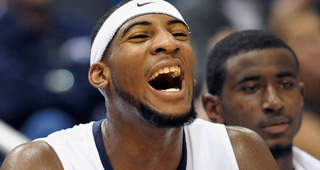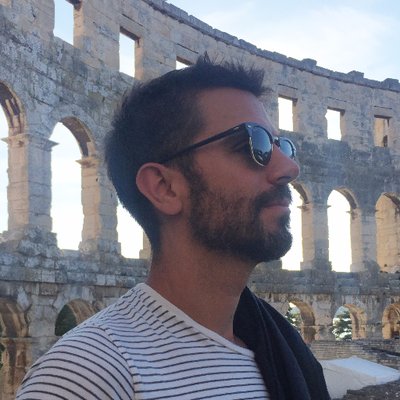The most profound single sentiment of the 2012 NBA Draft is that it is filled with players who frighten you to select and frighten you even more to pass upon.
Players like Andre Drummond and Perry Jones are classic epitomes of this dilemma. Both players have the qualifying athleticism and skill potential to become perennial All-Stars, but are equally likely to have middling, underachieving careers.
Too many front offices are irrationally afraid of these type of boom/bust talents while also acquitting themselves of the blame when these picks do fail. The participation of teams in the bust equation has more to do with the way players were developed more than the actual choices on draft night.
No team with complete confidence in their player development and the strength of their system would pass on Drummond in favor of any player in this class beyond Anthony Davis. Front offices such as the Celtics, Spurs and Rockets would self-confidently embrace the challenge of drafting a player that was put on this earth with to become one of the best three NBA centers.
All of the players in the top-five, including Davis, have holes and limitations to their game of some shape or form. The bust rate for players with the profile of Drummond is undoubtedly higher than those of Bradley Beal, Harrison Barnes and Thomas Robinson, but that inherently is what makes centers so rare and so invaluable.
1. New Orleans Hornets: Anthony Davis
The gap between Davis and the other two or three best players from this class will close significantly from its current position within the next 365 days, but he is a great talent, great kid and great franchise cornerstone for the Hornets.
2. Charlotte Bobcats: Thomas Robinson
Robinson plays a position of abundance and doesn’t have All-Star potential, but he is a legitimate power forward that is capable of being a 10-year starter. The Bobcats are in ‘stop the bleeding’ mode and Robinson helps with that more than any other player available. Regardless of that necessity, selecting Robinson here instead of Drummond or the acquisition of multiple picks/young players for this slot is critically shortsighted.
3. Washington Wizards: Bradley Beal
Do you realize that John Wall’s PER of 17.7 during his second season is virtually identical to Jason Kidd’s second season in 95-96 (17.8)? Now imagine the Mavericks stood pat at No. 6 in the 1996 Draft and Ray Allen slid one slot, followed by trading Jim Jackson for a veteran big man.
That didn’t happen and Kidd was traded in December to the Suns. This scenario will turn out much better as the Wizards will explode with an impossible to defend backcourt.
4. Cleveland Cavaliers: Michael Kidd-Gilchrist
Kidd-Gilchrist would be the appropriate pick for the Cavaliers even if they were picking second. This is a great fit for Kidd-Gilchrist and as talented as he is, he is a prospect where fit will determine the trajectory of his career. Assuming health across the board, the Cavaliers are a legitimate eight seed contender in 12-13 with the impact Kidd-Gilchrist can make on the wing with his defense and ability to score in transition.
5. Sacramento Kings: Harrison Barnes
Barnes fills a position of need on a talented team that needs an all-around small forward to be the lynchpin capable of providing direction.
6. Portland Trail Blazers (from Brooklyn): Damian Lillard
The Blazers would have killed for a point guard of Lillard’s capacity at any point during the previous decade. He has the game and demeanor to become a Rip City legend at the position.
7. Golden State Warriors: Andre Drummond
The suspiciously public reluctance to draft Drummond from the Warriors is the great smokescreen of the 2012 Draft buildup. If anything has been clear about this ownership group in their short time at the helm is that they will favor big, splashy PR-centric moves over the safe, measured approach. Joe Lacob knows Danny Ainge, Daryl Morey, Gregg Popovich, etc. all would take Drummond in this scenario and that the risk of passing on Drummond for a player barely above replacement level far outweighs the risk of taking him.
8. Toronto Raptors: Dion Waiters
There are several teams kicking tires on Waiters ahead of the Raptors, but this is the first slot that makes sense for him. Waiters won’t have any problems breaking down defenders off the dribble, a rare skill unquestionably, but he fits the mold of a 6th man due to his defensive matchup issues and potential for being a bad fit when he isn’t the best scorer on the floor.
No team in this area of the draft has a bigger need for a player like Waiters than the Raptors and his upside potential playing with talented offensive betas in DeMar DeRozan, Andrea Bargnani and Jonas Valanciunas will allow him to maximize his potential as an alpha dog.
9. Detroit Pistons: John Henson
The versatility of Greg Monroe allows the Pistons to pick between Henson and Tyler Zeller, both of whom would provide an excellent defensive fit.
10. New Orleans Hornets (from Minnesota via Clippers): Meyers Leonard
Zeller is the more sensible, automatically productive fit beside Davis in the frountcourt. His ability to clog the lane and allow Davis to be the dominant off-ball shotblocker he is would be ideal. But how much better will Zeller be than an average NBA center?
With Leonard, the Hornets have the opportunity to select a center with the athleticism and game to be a top-5 player at the position.
The choice between the two can be compared to the Sonics selecting Jeff Green (Zeller) in 2007 and Russell Westbrook (Leonard) in 2008.
11. Portland Trail Blazers: Tyler Zeller
The Blazers have a terribly thin frontcourt behind LaMarcus Aldridge and Zeller is capable of playing immediately while doing exactly what they need him to since there is enough talent elsewhere to compete for a playoff return.
12. Houston Rockets (from Milwaukee): Perry Jones III
The Rockets have been on a quest for a legitimate difference-maker throughout Morey’s tenure and here is a shot to get him at No. 12. Furthermore, if the Rockets don’t move from this slot before the draft, there is no player available that will have higher trade value following his inevitably remarkable Summer League showcase.
13. Phoenix Suns: Jeremy Lamb
Lamb has enough game to be in the conversation far higher than this and has a more easily definable NBA path than Terrence Ross and Austin Rivers, who are also strongly in play.
14. Milwaukee Bucks (from Houston): Terrence Jones
I was blown away by the transformation of Jones from his freshman season to his jack-of-all-trades sophomore campaign, particularly on defense. There was never doubt Jones had a highly promising point forward offensive game, but he also proved himself capable of consistently guarding NBA power forwards.
15. Philadelphia 76ers: Terrence Ross
The Sixers figure to be in a state of flux this offseason and Ross would give them upside while also fill a perimeter shooting need immediately.
16. Houston Rockets (from New York): Moe Harkless
This draft slot for Harkless is appropriate and is another player that will instantly have greater trade value following Summer League for a team looking to rebuild.
17. Dallas Mavericks: Austin Rivers
Rivers perfectly fits the Jason Terry mold for Dallas and he also would be able to coexist defensively with a bigger point guard like Deron Williams as a best case scenario for the franchise.
18. Houston Rockets (from Utah via Minnesota): Marquis Teague
The point guard situation is a tenuous one for the Rockets and there is no doubt Teague would have been the best available at the position in 2013 had he remained at Kentucky.
19. Orlando Magic: Jared Sullinger
Our first real clue on what Rob Hennigan is thinking in regards to Dwight Howard will manifest with this selection. Sullinger couldn’t possibly walk into a better situation than to share a frontcourt with Howard, even if the said frontcourt would have the most fragile pair of backs in the game.
20. Denver Nuggets: Kendall Marshall
George Karl would have to stop the slide of a Tar Heel, particularly at a position of need.
21. Boston Celtics: Royce White
I can’t realistically see White going before this slot and I also can’t realistically see Danny Ainge passing on him twice. White represents everything Ainge loves about the draft and why he has such an intriguing record.
I expect Ainge to package these two picks to move up, possibly for Perry Jones.
22. Boston Celtics (from Clippers via Oklahoma City): Fab Melo
The Celtics are still looking for a big bodied center to replace Kendrick Perkins and here he is and some.
23. Atlanta Hawks: Arnett Moultrie
Moultrie is extremely raw, but would be an interesting fit beside Al Horford in spurts if Josh Smith does leave if anticipated.
24. Cleveland Cavaliers (from Lakers): Festus Ezeli
Ezeli is a classic end of the first round project center and would be a great fit within the franchise culture.
25. Memphis Grizzlies: Tony Wroten
Wroten is a classic combo guard that can spell Mike Conley and also play beside him.
26. Indiana Pacers: Evan Fournier
The backcourt needs attention at both spots and every point guard capable of cracking this rotation is off the board, which leaves Fournier and an element the Pacers don’t currently possess.
27. Miami Heat: Darius Miller
Miller gives the Heat a spot-up shooter on the wing while fitting into the Riley-mold far better defensively than someone like John Jenkins.
28. Oklahoma City Thunder: Andrew Nicholson
The Thunder need more post offense and Nicholson would be an instant improvement.
29. Chicago Bulls: Will Barton
The Bulls absolutely need a combo guard and Barton’s strengths (transition, spot-up shooting) are what they need more than his weakness (isolation scoring).
30. Golden State Warriors (from San Antonio): Quincy Miller
Miller doesn’t score in any single way exceptionally well and I see no chance of him becoming a starter, but has enough skill to become a solid wing at the end of a rotation due to his versatility in playing multiple positions



